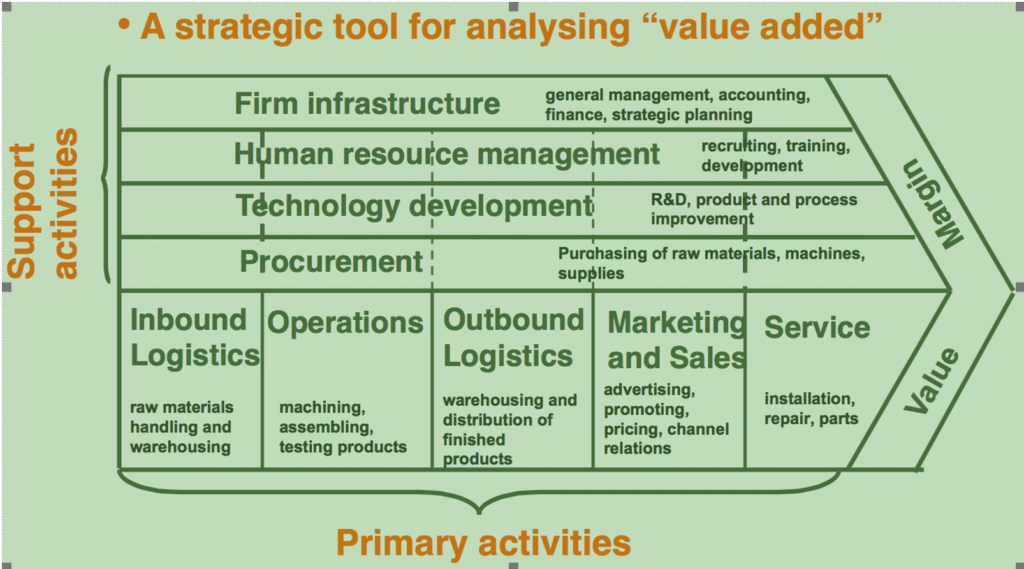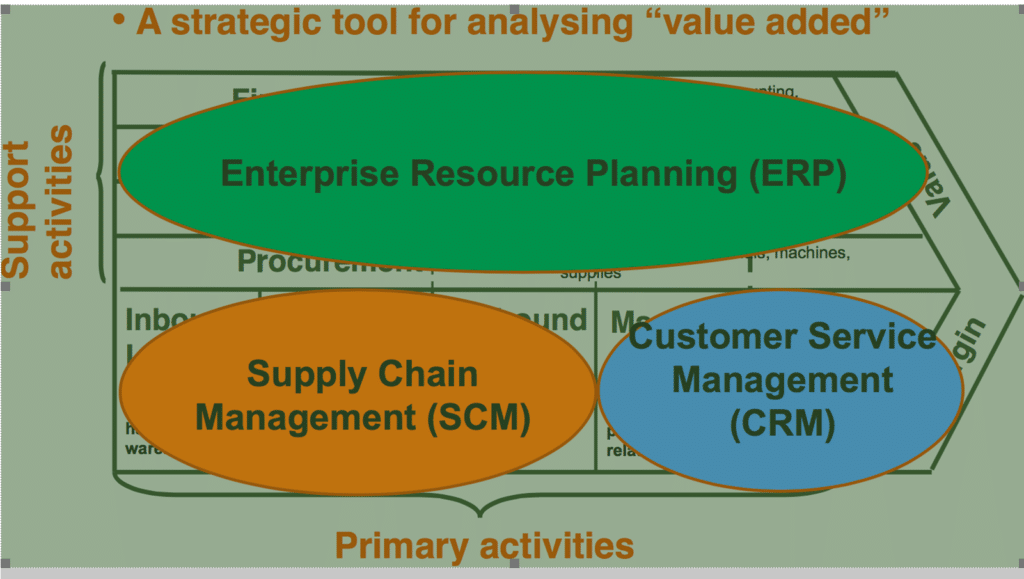Critical Discussion of the Quality Management in Value Chain.
January 18, 2022 2022-01-18 20:22Critical Discussion of the Quality Management in Value Chain.

Critical Discussion of the Quality Management in Value Chain.
Need a paper like this one? Get in touch via the email address or order form on our homepage.
Abstract
This report discusses the question of how companies achieve quality in the value chain. The integration of quality management into different stages and components of the value chain is recognised as the most suitable solution to quality management and improvement from the perspective of the value chain. This report attempts to explain the practice of quality management in different components of value chain for illustrating this question. Quality management applied to supply chain management, enterprise resource planning and customer service management can ultimately improve and maintain the quality of a product. And, this report chooses Toyota as an example to explain the method and practices used by Toyota on quality management in these functions. This report confirms that quality management philosophy can be effectively translated into different forms suitable for different components of value chain due to the improvement of quality.
Introduction
This report critically evaluates the question of how companies enhance and maintain quality in the value chain. The quality improvement in the value chain requires companies to incorporate quality management into components of value chain, including the primary and supportive activities. In fact, each part of these components, such as firm infrastructure, logistics and customer service, can be applied quality management to. Relevant theory examines the impacts on the practices of quality management in the value chain, and the case study of Toyota can support this practice. In the following part, this report gives literature review on the concept of quality, its importance and value chain. Then this report discusses quality management in the value chain through both case study and theory. The last part is conclusion.
2.0 Literature review
The concept of quality has been extensively discussed in academic and business environments, because it is closely related to customer satisfaction, operation management of supply chain, enterprise resource planning, and customer relationship, even a company’s success (Prajogo, McDermott and Goh, 2008). Some authors, such as Sebastianeli and Tamimi (2002), and Stevenson (2012), define quality as an ability of a product or service that satisfies customers’ needs and expectations. Consumers’ perceived quality and relevant benefits fundamentally determine to what extent the quality of a product or service can meet their needs, because their evaluation on quality results in purchasing decision. Other researches, such as Hillier and Lieberman (2010), propose that quality has its different dimensions, including performance, features, conformance, warranty, service, aesthetics, perceived quality and price (p.467). These dimensions exactly describe and explain major characteristics of a product’s quality. For instance, the attribute of performance means that a product should be effectively used by consumers on specific purposes. It focuses on major functions and attributes of a product, including reliability, durability and maintainability. Based on these dimensions, a product can be effectively examined and evaluated by consumers and manufacturers.
A quality product directly contributes to customer satisfaction (Rust, Moorman and Dickson, 2002), because it fundamentally affects consumers’ perception. Satisfied consumers can facilitate a company to achieve survival and sustainability through the long term profitability while this firm can effectively create and deliver superior value to customers based on improved quality. In particular, superior quality can make consumers to identify specific brand and product from competitors, and thus, this brand has a source of competitive advantage against competitors (Lubit, 2001). From the perspective of operations management, the delivery of superior quality significantly relies on great commitment to quality management applied to a full range of operations from sourcing to production, and, key stakeholders, such as suppliers, manufacturers, and consumers, involve the improvement of quality through excellent performance of these operations. There is no doubt that this commitment and excellent implementation cultivate strategic capabilities for competitive advantage (e.g. Li et al., 2006). Therefore, quality and relevant operations for quality improvement influence the development of competitive advantage.
The value chain proposed by Porter (1985) clarifies the primary and supportive activities of a company for creating value. Sanchez and Heene (2003) argue that value chain defines and describes all activities that create a product from idea to production, deliver this product satisfying consumers’ needs, and provide additional service after purchasing. It is more concerned with the integration of all activities and operations, yet single function and department of an organisation. As Figure 1 in Appendix shows, value chain contains two major components, including primary activities and supportive activities. A company develops or purchases advanced technologies for improving and ensuring the possibility of producing high quality products, and manufacturing operations, such as assembling, contribute to the creation and delivery of high quality products to consumers. This integrated processes and operations to a great extent improve and ensure products’ quality (Popescu and Dascalu, 2011). In the following, this report concentrates on the explanation and discussion of how a company achieves quality in the value chain.
3.0 Critical Discussion on the Achievement of Quality in the Value Chain
The exploration of how a company achieves quality in the value chain relies on the discussion of relevant theories and empirical evidence, and the explanation of real example. The example of Toyota will be chosen as case study material for illustrating quality management in value chain. Toyota is a leading automative manufacturing company operating its manufacture and other activities around the world, and it has great experience and knowledge on total quality management that significantly ensures competitive position of Toyota (Toyota, 2015a). The exploration of this manufacturing company can effectively facilitate this report to examine this question.
Quality management and improvement are significantly attributed to the strategy and practice of quality management within an integrated value chain. Each component facilitates companies to practise quality improvement. In particular, full commitment of each component can ensure the production of high quality product, since all activities of value chain can impact quality improvement. Abundant studies, such as Kaynak and Hartley (2008), and Kannan and Tan (2005), confirm that supply chain management from sourcing, production to distribution can positively impact quality improvement. A manufacturer cooperating with suppliers focuses on the implementation of quality management for ensuring quality, such as Toyota and its suppliers. Toyota plans a series of supplier standards and coordinates suppliers to comply with these standards for providing consistently high quality parts (Toyota, 2015b). The commitment of both suppliers and Toyota to quality standards means that from sourcing to production, quality improvement of a product relies on the contribution of quality improvement practices to each process and operations. If supplies of companies cannot effectively implement quality management, parts with poor quality cannot contribute to the production of high quality product. One fault in this process can ultimately reduce the quality of the final product. During the process of supply chain, companies not only make great efforts to manage quality through a series of standards, such as IOS standards, and TQM, but also require cooperating with suppliers and other partners to involve the process of full quality management consistently.
Referring to the practice of quality improvement in the supply chain, the article of Kaynak and Hartley (2008) explains that two practices of quality management, including management leadership and training, can effectively manage and improve quality in the supply chain process. First, management leadership on quality management is to embrace and promote quality management practices from the perspective of top management. The great engagement of top management in quality management can powerful persuade all levels of managers and employees into the commitment to quality improvement efforts. According to Chen and Paulraj (2004), and Foster (2008), top management’s focus on quality management can motivate managers and employees to comply with the well-defined standards of quality management, partly because it is closely linked to performance appraisal and cost reduction. During the early stage of Toyota, its top management’s commitment to product quality improvement strongly underpins its organisational culture on TQM (Smith and Tushman, 2005), and Toyota believes that based on the philosophy of ‘customer first’, TQM can stimulate changes and innovations of Toyota for continuous improvement (Toyota, 2015c). Second, training can leverage the practice and performance of quality management. At all levels of managers and employees, quality-related trainings not only give the overall understandings on the strategic importance of quality management in supply chain as one part of value chain, but also enhance the skills, abilities and knowledge of employees on quality control and management. In particular, for employees with different job position, companies can develop and provide specialised training programs for making employees to perform their quality improvement practice better. Some trainings, such as case study-featured lessons, coaching and experience-based recommendations, can make employees learn the practice of quality control (Sousa and Voss, 2002). For instance, Toyota provides TQM training for employees on the enhancement of high reliability and safety skills (Toyota, 2015c).
The involvement of QM practices in each stage and component of value chain can ultimately contribute to the creation and delivery of the superior quality products. Robinson and Malbotra (2005) stress that the quality of a product not only relies on the activities within an organisation but also depends on each component and stage in a value chain. Figure 2 in Appendix shows another two management functions and processes, including enterprise resource planning (ERP), and customer service management (CRM). The part of ERP as the supportive activities, including firm infrastructure, human resource management, technology development and procurement (Porter, 1985), strongly supports the practice of quality improvement. Firm infrastructure can ensure companies to cultivate and develop abilities to implement quality improvement. For instance, the philosophy of TQM in Toyota as a part of firm infrastructure leads managers and employees to embrace and practise quality management. There is no doubt that the recruitment, training and retention of talented employees can promote the further development of quality management, since they not only concentrates on the change and innovation on TQM, but also motivate colleagues and followers to practices quality control and management. The research of Bou and Beltran (2005) can confirm that human resource practices incorporating quality management philosophy can develop high-commitment human resource to quality management, and enhance employees’ responsibility for quality culture development. Toyota has the culture of TQM, and it interactively communicates with employees and managers who have great level of commitment to quality management. Technology development significantly impacts the innovation of quality management practice. For instance, Toyota continuously innovate quality management system from the Toyota Production System to Lean Manufacturing (Anvari, Ismail and Hojjati, 2011), and this innovation promotes quality improvement from production to customer service.
Customer service management in value chain, such as marketing and sales, and service, exerts the powerful impact on customer satisfaction and loyalty. During this process, marketing communications on quality and quality service greatly contribute to the value-add process from the customer perspective. In particular, service quality improvement not only contributes to the enhancement of customer satisfaction and loyalty, but also facilitates companies to enhance market orientation (Wang, Chen and Chen, 2012). The quality management and improvement on customer service can directly add value to this process, and thus, consumers can express great satisfaction because of high level of perceived quality. There is no doubt that this process of effectively creating and delivering quality service can enhance the performance of companies from the perspective of the value chain. In Toyota, it believes that the commitment to customers’ satisfaction not only relies on high quality automotive, but also is closely linked to the delivery of reliable and quality service (Toyota, 2015d). The quality management integrated into the process of customer service management is the key to the creation and delivery of improved quality service.
In summary, due to achieve and improve quality, companies need to incorporate quality management philosophy and practices into value chain’s components. Based on the understandings of value chain divided into three parts, including supply chain management, enterprise resource planning, and customer service management, companies need to incorporate quality management philosophy and practices into these parts. For instance, human resource function in ERP should be dedicated to develop high-commitment talented employees who can perform quality management better.
4.0 Conclusion
This report clarifies the question of how companies improve quality in the value chain. The primary activities of value chain are more responsible for the implementation of quality management, and the supportive activities strongly support the development of quality management philosophy and practice. This report specifies the practice of quality management applied to different functions of value chain. Both theories and case study are used for illustrating how companies improve and maintain quality in the value chain. From the perspective of three components, including enterprise resource planning, supply chain management and customer service management, quality management can be effectively applied to these components. The example of Toyota suggests that companies can coordinate and organise these components for complying with the philosophy and practice of quality management. For example, from the overall perspective, quality management practices not only depend on how companies plan and implement a series of standards on quality improvement, but also rely on the interactive cooperation with suppliers and other external partners for being committed to quality management.
Reference
Anvari, A., Ismail, Y. and Hojjati, S. (2011) A study on total quality management and lean manufacturing: Through lean thinking approach. World Applied Sciences Journal, 12(9), pp. 1585-1596.
Bou, J. C. and Beltran, I. (2005) Total quality management, high-commitment human resource strategy and firm performance: An empirical study. Total Quality Management & Business Excellence, 16(1), pp. 71-86.
Chen, I. J. and Paulraj, A. (2004) Towards a theory of supply chain management: The constructs and measurements. Journal of Operations Management, 22(2), pp. 119-150.
Foster, S. T. (2008) Towards an understanding of supply chain quality management. Journal of Operations Management, 26(4), pp. 461-467.
Hillier, F. S. and Lieberman, G. J. (2010) Introduction to operations research, 9th Edition. New York: McGraw-Hill.
Kannan, V. R. and Tan, K. C. (2005) Just in time, total quality management, and supply chain management: Understanding their linkages and impact on business performance. Omega, 33(2), pp. 153-162.
Kaynak, H. and Hartley, J. L. (2008) A replication and extension of quality management into the supply chain. Journal of Operations Management, 26(4), pp. 468-489.
Li, S., Ragu-Nathan, B., Ragu-Nathan, T. S. and Rao, S. S. (2006) The impact of supply chain management practices on competitive advantage and organisational performance. Omega, 34(2), pp. 107-124.
Lubit, R. (2001) The keys to sustainable competitive advantage. Organisational Dynamics, 29(3), pp. 164-178.
Popescu, M. and Dascalu, A. (2011) Value chain analysis in quality management context. Bulletin of the Transilvania University of Brasov, 4(3), pp. 121-128.
Porter, M. E. (1985) Competitive advantage: Creating and sustaining superior performance. New York: Free Press.
Prajogo, D. I., McDermott, P. and Goh, M. (2008) Impact of value chain activities on quality and innovation. International Journal of Operations & Production Management, 28(7), pp. 615-635.
Robinson, C. J. and Malhotra, M. K. (2005) Defining the concept of supply chain quality management and its relevance to academic and industrial practice. International Journal of Production Economics, 96(3), pp. 315-337.
Rust, R. T., Moorman, C. and Dickson, P. R. (2002) Getting return on quality: Revenue expansion, cost reduction, or both?. Journal of Marketing, 66(4), pp. 7-24.
Sanchez, R. and Heene, A. (2003) The new strategic management: Organisation, competition, and competence. New York: John Wiley and Sons.
Sebastianelli, R. and Tamimi, N. (2002) How product quality dimensions relate to defining quality. International Journal of Quality & Reliability Management, 19(4), pp. 442-453.
Simth, W. K. and Tushman, M. L. (2005) Managing strategic contradictions: A top management model for managing innovation streams. Organisation Science, 16(5), pp. 522-536.
Sousa, R. and Voss, C. A. (2002) Quality management re-visited: A reflective review and agenda for future research. Journal of Operations Management, 20(1), pp. 91-109.
Stevenson, W. J. (2012) Operations management, 7th Edition. New York: McGraw-Hill.
Toyota, (2015a) Operations. [online] available at: <http://www.toyota.com/usa/operations/design-research-development> [Accessed 20 Mar 2015]
Toyota, (2015b) Supplier standards. [online] available at: <http://www.toyota-boshoku.com/us/procurement/supplier/index.html> [Accessed 20 Mar 2015]
Toyota, (2015c) Total quality management: Changes and innovation. [online] available at: <http://www.toyota-global.com/company/history_of_toyota/75years/data/company_information/management_and_finances/management/tqm/change.html> [Accessed 20 Mar 2015]
Toyota, (2015d) High quality starts with the customer. [online] available at: <http://www.toyota-global.com/company/toyota_traditions/quality/jan_mar_2011.html> [Accessed 20 Mar 2015]
Wang, C. H., Chen, K. Y. and Chen, S. C. (2012) Total quality management, market orientation and hotel performance: The moderating effects of external environmental factors. International Journal of Hospitality Management, 31(1), pp. 119-129.
Appendix
Figure 1: Value Chain

Figure 2: ERP, SCM and CRM of Value Chain


![[Solved] ENGL147N - Week 7 Assignment- Final Draft of the Argument Research Paper](https://prolifictutors.com/wp-content/uploads/2023/01/Solved-ENGL147N-Week-7-Assignment-Final-Draft-of-the-Argument-Research-Paper--240x142.png)
![[Solution] - NR305 - Week 3 Discussion: Debriefing of the Week 2 iHuman Wellness Assignment (Graded](https://prolifictutors.com/wp-content/uploads/2022/06/Best-Answer-NR305-Week-3-Discussion-Debriefing-of-the-Week-2-iHuman-Wellness-Assignment-Graded--240x142.png)

![[Best Answer] NR305 - Week 2 Discussion: Reflection on the Nurse’s Role in Health Assessment (Graded)](https://prolifictutors.com/wp-content/uploads/2022/06/Best-Answer-NR305-Week-2-Discussion-Reflection-on-the-Nurses-Role-in-Health-Assessment-Graded-240x142.png)
![[Best Answer] NR305 - Week 2 Assignment: Wellness Assessment: Luciana Gonzalez (iHuman) (Graded)](https://prolifictutors.com/wp-content/uploads/2022/06/Best-Answer-NR305-Week-2-Assignment-Wellness-Assessment-Luciana-Gonzalez-iHuman-Graded--240x142.png)

